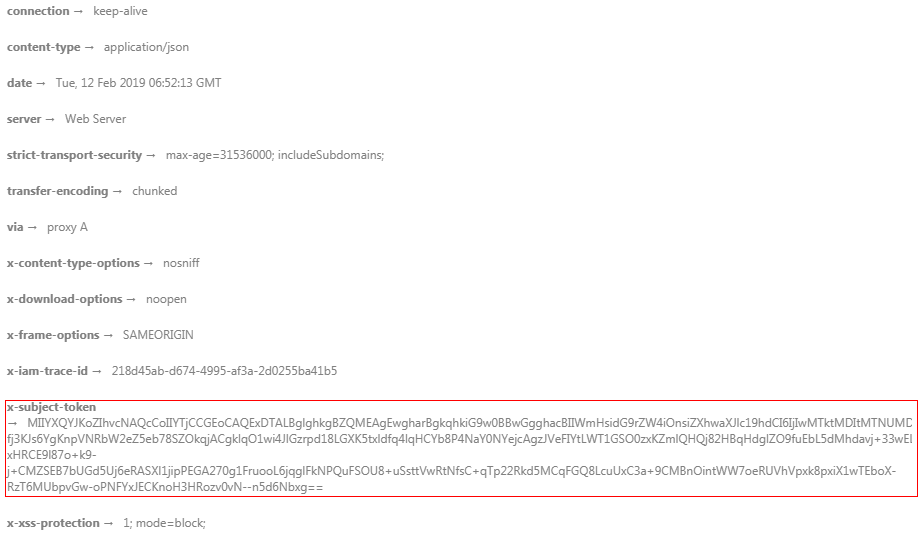Response
Status Code
After sending a request, you will receive a response, including a status code, response header, and response body.
A status code is a group of digits, ranging from 1xx to 5xx. It indicates the status of a request. For more information, see Status Code.
For example, if status code 201 is returned for calling the API used to obtain a user token, the request is successful.
Response Header
Similar to a request, a response also has a header, for example, Content-Type.
Figure 1 shows the response header fields for the API used to obtain a user token. The x-subject-token header field is the desired user token. This token can then be used to authenticate the calling of other APIs.
(Optional) Response Body
The body of a response is often returned in structured format as specified in the Content-Type header field. The response body transfers content except the response header.
The following is part of the response body for the API used to obtain a user token.
1 2 3 4 5 6 7 8 9 10 11 12 |
{ "token": { "expires_at": "2019-02-13T06:52:13.855000Z", "methods": [ "password" ], "catalog": [ { "endpoints": [ { "region_id": "az-01", ...... |
If an error occurs during API calling, an error code and a message will be displayed. The following shows an error response body.
1 2 3 4 |
{ "error_msg": "The format of message is error", "error_code": "AS.0001" } |
In the response body, error_code is an error code, and error_msg provides information about the error.
Feedback
Was this page helpful?
Provide feedbackThank you very much for your feedback. We will continue working to improve the documentation.







